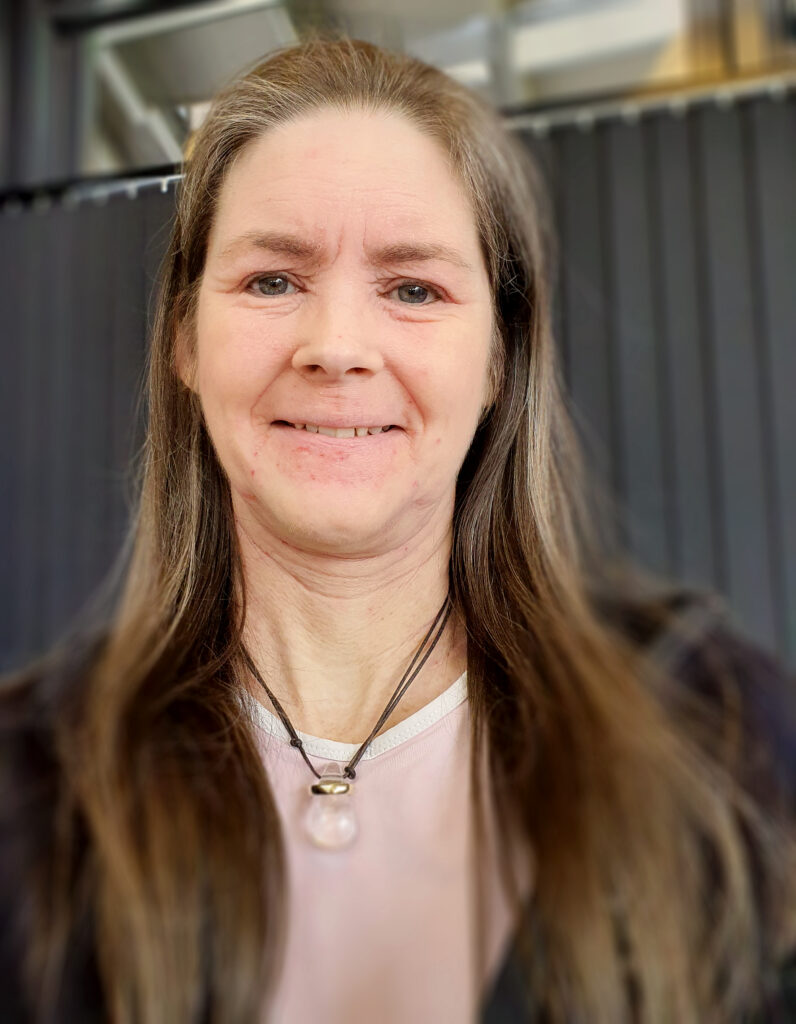
Irene is 48 years old and was diagnosed with atopic dermatitis (eczema) during childhood.
Irene has been living with eczema for her entire life, since being diagnosed with eczema at the young age of five. Besides her difficult skin, she was also diagnosed with a range of various allergies (horse, dog and cat, followed later in life by birch pollen and grass.
As a child, Irene’s main treatment option consisted of tar baths. Every two months, Irene would go to the hospital for treatment, after which healthcare personnel would wrap her in gauze and dress her in a set of hospital garments which she would have to wear for two days, even to school. This experience left a lasting impact on her, and to this day, the smell of tar from roadwork can still make her shudder. While the tar baths did improve her skin condition, Irene eventually transitioned to other treatments because the process was too time-consuming.
Exploring different treatments
In her twenties, Irene underwent phototherapy. She began with six months of UVB treatment, followed by two years of PUVA treatment, which combines biologics with UVA phototherapy and is only available at specialized hospitals. This treatment was the most effective for Irene, nearly clearing her eczema entirely. However, the eczema returned, and since Irene had moved far from the hospital offering PUVA, she had to seek more accessible treatments like hormonal creams.
Throughout her life, Irene has tried various treatments, including hormonal and steroid creams, as well as biological therapies. Apart from PUVA, few provided lasting relief, and many caused significant side effects. Eventually, the side effects became too severe for Irene to continue. Seeking alternative solutions, she radically changed her lifestyle by eliminating gluten and sugar from her diet to reduce glucose levels. She also switched to wearing only cotton and viscose fabrics, as materials like polyester and wool aggravated her skin. While these changes provided some relief, they have not offered a long-term solution that allows her to live freely and unburdened.
The progression of eczema
Over the years, the location of Irene’s eczema has changed. Initially, it appeared in her armpits, knee joints, and elbows, but as a teenager, it spread to her shoulders and neck. From her early twenties to the present, it primarily affects her hands and face, particularly around her eyes.
While eczema visibly affects Irene’s appearance, she finds that the worst part of her illness is the itching. At times, the itch becomes so unbearable that she resorts to using a rough towel to scratch her skin, offering momentary relief but leaving her skin frayed, cracked, and inflamed.
Irene’s mental state is closely tied to the severity of her AD. During significant life events, such as falling in love, becoming a mother, or getting married, her eczema would flare up more severely, often covering her entire body and increasing the intensity of the itch.
”At times, I can be very frustrated about having atopic dermatitis. Especially when the itch is severe and the skin is frayed, it prevents me from living my life like everyone else.”
Despite these challenges, Irene’s family, friends and colleagues are supportive, and she strives to prevent her condition from negatively impacting her life. She acknowledges that while her disease is burdensome, many people suffer from even more severe cases.
“It is important to stay positive and take care of yourself, so the atopic dermatitis doesn’t control your life. And suffering from atopic dermatitis is certainly nothing to be ashamed of.”
Today, Irene is not using any prescription medication due to the long-term side effects, such as thinning and delicate skin. Although hesitant to try new treatments because of the potential for side effects, she would be open to a treatment that offers fewer and less severe risks.
